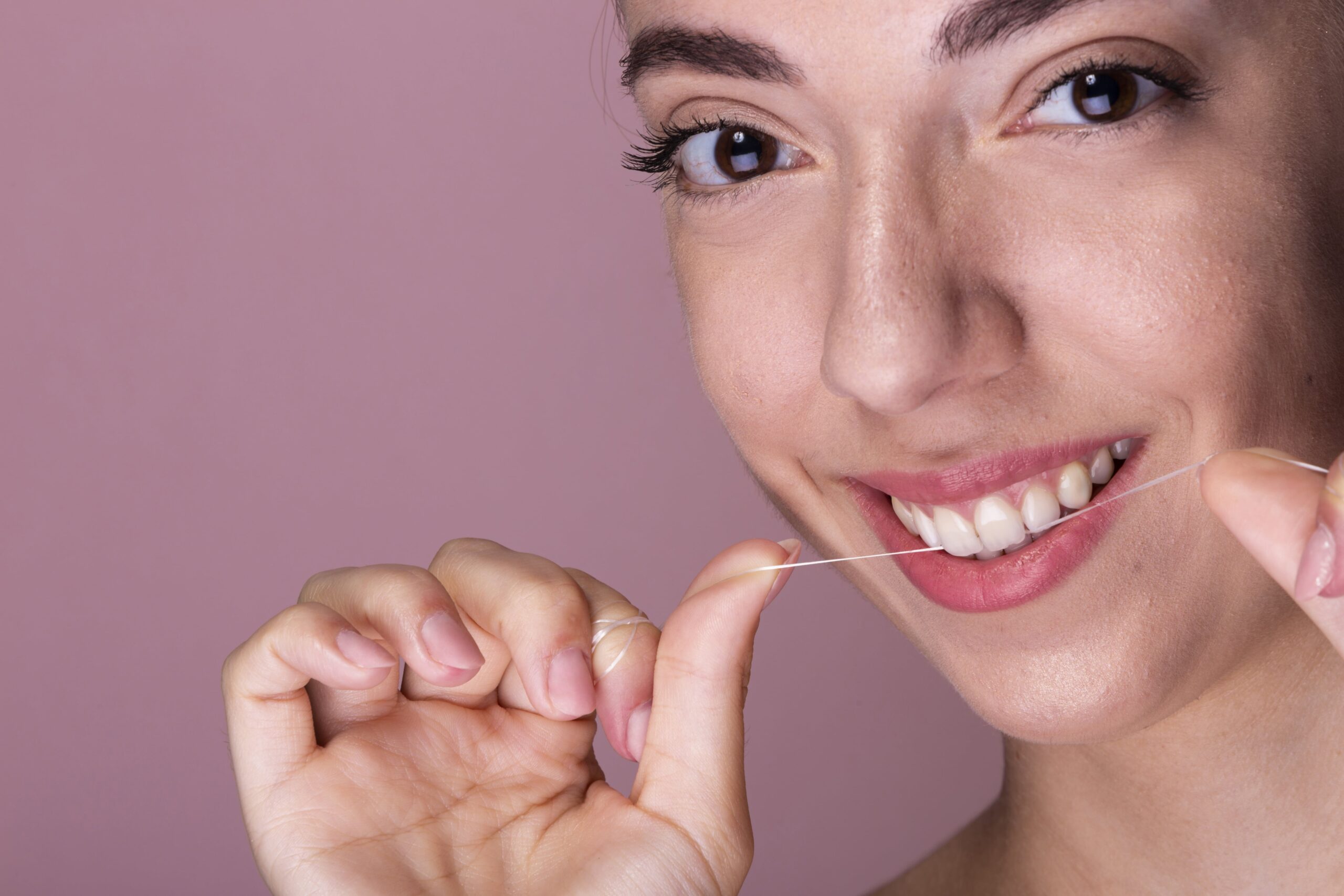
Are you sporting metal braces and feeling overwhelmed by the thought of having to floss around them? Flossing with a set of brackets, wires, and bands can seem daunting but it doesn’t have to be.
The experienced dental professionals at our clinic know that proper teeth cleaning is an essential part of maintaining healthy-looking teeth and gums while wearing braces. In this blog post, we provide a step-by-step guide for mastering the art of flossing with braces so that you can keep your smile gorgeous during your orthodontic treatment!
How to Prepare Your Braces for Flossing
Preparing your braces for flossing is an important step to ensure effective and comfortable flossing. Here are some key steps to follow when preparing your braces for flossing:
- Gather the necessary tools: Before starting, gather the tools you’ll need for flossing with braces. This typically includes dental floss, orthodontic floss threaders, or interdental brushes. Having these tools on hand will make the process easier and more efficient.
- Position yourself properly: Find a comfortable and well-lit area where you can easily access your teeth and braces. You may choose to stand in front of a mirror or sit down with good visibility of your mouth.
- Rinse your mouth: Before flossing, rinse your mouth with water or an antimicrobial mouthwash to remove any loose debris and create a cleaner environment for flossing.
- Thread the floss: If using floss threaders, insert one end of the floss through the loop of the threader. Make sure the floss is securely attached to the threader, as this will help in guiding it under the archwire.
- Thread the floss under the archwire: Gently guide the floss threader, with the floss attached, under the archwire of your braces. Be careful not to apply excessive force or cause discomfort. Move the threader back and forth until the floss is positioned between two teeth.
- Position the floss: Once the floss is beneath the archwire, carefully position it between the two teeth you are flossing. Make sure the floss is snug against the side of each tooth.
- Floss between the teeth: Using a gentle back-and-forth motion, move the floss up and down against the side of each tooth, ensuring that you clean along the gumline. Be cautious not to snap the floss or apply too much pressure that could harm your gums or dislodge your braces.
- Repeat the process: After flossing between two teeth, remove the floss from under the archwire, reposition it for the next set of teeth, and repeat the flossing process. Continue this step-by-step process until you have flossed between all of your teeth and around all of your braces.
By properly preparing your braces for flossing, you can ensure a smooth and effective flossing experience. Take your time, be gentle, and remember to floss at least once a day to maintain optimal oral hygiene during your orthodontic treatment. If you have any concerns or questions, consult your orthodontist or dentist for guidance tailored to your specific needs.
Choosing the Right Type of Floss for Braces
Choosing the right type of floss for braces is crucial to ensure effective cleaning and comfort during flossing. Here are some considerations to keep in mind when selecting the appropriate floss for braces:
Waxed Dental Floss
Waxed dental floss is a popular choice for flossing with braces. The wax coating helps the floss glide more easily between the teeth and braces, reducing the chances of it getting stuck or fraying. This type of floss is less likely to shred or tear when maneuvering around brackets and wires, making it a practical option.
Unwaxed Dental Floss
Unwaxed dental floss is also an option for flossing with braces, but it may require a bit more effort to navigate around the brackets and wires. While unwaxed floss lacks the slickness of waxed floss, it can still effectively remove plaque and debris. However, it’s important to be gentle to avoid snapping the floss or causing discomfort.
Super Floss or Orthodontic Floss
Super floss or orthodontic floss is specifically designed for individuals with braces or dental appliances. It typically comes with a stiffened end that can be threaded under the archwire of braces. This type of floss allows for easier access between teeth and around brackets, making it an excellent choice for flossing with braces.
Water Flossers
Water flossers, also known as oral irrigators, use a stream of water to clean between teeth and around braces. They can be an effective alternative or complement to traditional flossing. Water flossers are particularly helpful for individuals with braces as they can flush out food particles and plaque from hard-to-reach areas. However, they should not replace regular flossing entirely, as they may not remove plaque as effectively as physical flossing.
When choosing floss for braces, consider your personal preference and comfort level. It’s essential to find a floss that allows you to clean effectively between your teeth and around your braces without causing discomfort or difficulty. Your orthodontist or dentist may also provide recommendations based on your specific orthodontic treatment.
Exploring Alternative Flossing Methods for Braces
While traditional flossing is effective for cleaning between teeth and around braces, there are alternative flossing methods that can complement or replace traditional flossing. Here are some options to consider:
When considering alternative flossing methods, it’s important to consult with your orthodontist or dentist to determine the most suitable options for your specific braces and oral health needs. They can provide guidance on the proper use and techniques for these alternative methods.
If you are unsure about how to properly floss with braces or just have general questions about dental health and orthodontics treatments, visit Bespoke Dental today! We’ll be happy to help and ensure that your smile looks beautiful and healthy!




